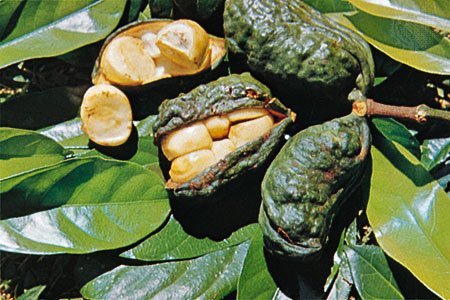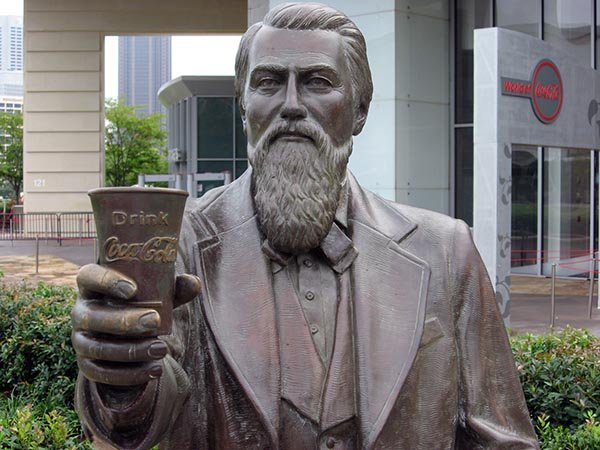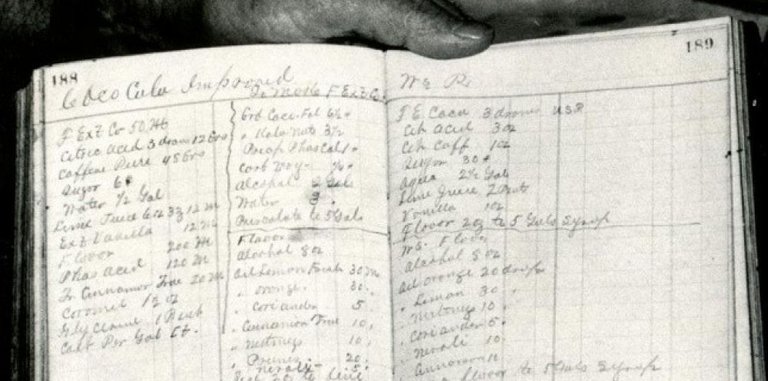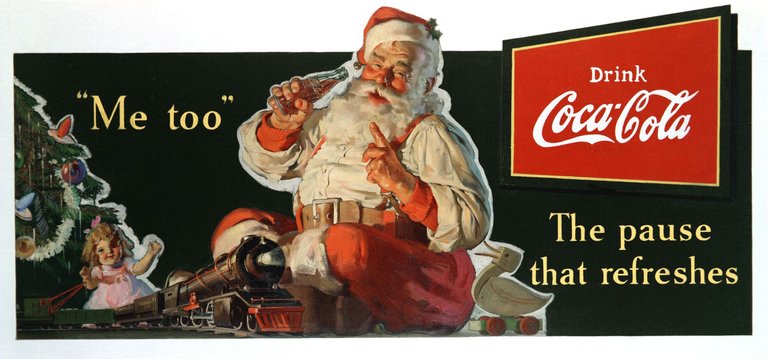Coca Cola

Right now, I'm trying to stop drinking my Coca-Cola Zero because I know it's not good for you, but I admit that there are days when I have trouble to pass ...
Coca-Cola, sometimes abbreviated Coca or Coke is a US trademark registered in 1886. This name comes from two ingredients used for its original composition: the coca leaf and the kola nut.

History
At the end of the American Civil War, John Pemberton is a pharmacist in Columbus, Georgia, and has a small laboratory in Bay City, Michigan. In 1870, he moved to Atlanta, the market being larger than that of Columbus and Bay City. A veteran of the American Civil War, John Pemberton contracted morphine addiction as a result of the treatment of pain due to his injuries. He is then looking for a drink that could allow him to gradually detoxify.
The first Coca-Cola recipe, French Wine Coca, was invented by John Pemberton in 1885. It is an alcoholic beverage made from coca, kola nut and damiana (a relatively small shrub that gives It blooms from early to late summer, followed by fig-like berries because of the essential oils present in the plant. [4] shrub is known to have a strong, spicy scent, reminiscent of chamomile.The leaves were traditionally used in infusion and incense by the indigenous peoples of Central and South America for its relaxing effects. the first to report that the Indians of Mexico used to drink infusions of damiana - and other ingredients, including sugar, as an aphrodisiac). Pemberton was probably inspired by the Mariani wine recipe, hence the name French Wine Coca, a blend of Bordeaux wine and coca leaf created by the Corsican chemist Angelo Mariani in 1863. The sale of French Wine Coca will continue until Pemberton's death in 1888.

On November 25, 1885, the Mayor of Atlanta held a referendum on the issue of banning alcohol in the city. Atlanta becomes a dry city for a trial period of two years during which the sale of alcohol is prohibited. Thus, the challenge for the young company will be to offer a soft drink, cutting with orangeades and providing the effects of bourbon. Pemberton will develop a non-alcoholic version of his drink, but still with coca, his main active ingredient, which will remain in the recipe until the late nineteenth century. Pemberton partners with Frank Robinson, a trained accountant and above all, an ambitious man.
He met him in the presence of his partner Ed Holland in 1885. From this association, the Coca-Cola brand and the Pemberton Chemical Company were officially born. Frank Robinson is, for some, the initiator of the creation of the name of the new drink, the Spencerian calligraphy of its logo and the initiator of a massive recourse to advertising. On June 6, 1887, Pemberton registered the mark in the commercial register, which made him the sole owner and that at the expense of his former partners. In the same year, businessman Asa Griggs Candler buys Coca-Cola in Pemberton for $ 2,300, taking advantage of Pemberton's disease with Frank Robinson to buy him back by force. He will, with the help of an intense marketing campaign, give rise to the drink.
It was bottled for the first time in 1894 by Joe Biedenharn in the back room of a confectionery factory in Vicksburg, Mississippi.
Officially, the drink no longer contains cocaine since 1903 but after a surprise check of the US Food, Drug and Insecticide on the product, it turns out that traces are still detected after 1929. Scientific research shows that a Coca-Cola glass in 1886 contained about nine milligrams of cocaine. In 1911, the director of the US Department of Agriculture's chemistry office, Harvey Washington Wiley, confronts the firm and its important research department, accusing it of misusing the name of Coca-Cola when it no longer contains cocaine and also illegally use caffeine as an additive. The case ends in 1916 in the Supreme Court, which requires the company to pay court fees and reduce the caffeine content of its soda. This legal case marks an important milestone in the development of labeling standards.
Secret formula

The formula of the current Coca-Cola is not communicated by the firm in the name of the industrial secret. That of Pemberton, which has been the subject of a patent, is now in the public domain, although prohibited from manufacture because of its ingredients. The firm, since its creation, maintains a certain mystery on its recipe. The document has been based since 2011 in the company's World of Coca-Cola Museum, located in Atlanta.
The official product sheet simply advertises carbonated water, sugar (high fructose corn syrup or sucrose depending on the country), caramel coloring E150d, phosphoric acid as acidifier, plant extracts and aroma caffeine. Nevertheless, according to William Reymond, author of the book Coca-Cola, The Forbidden Inquiry), one can find on the Internet and in his book the recipe for the drink, including a mixture of sugar and acidifying agents (phosphoric acid E338 , citric acid E330, carbon dioxide E290, benzoic acid E210 or sodium benzoate E211 active against fungi, sulfur dioxide E220 active against bacteria), essential oils stabilized with an emulsifier (glycerin E442) or with gum arabic E414, caffeine, vanilla and ammonium sulphite caramel dye E150d. This is, however, a secret that concerns only the manufacturing process.
As far as ingredients are concerned, chemists have a perfectly quantified list since the invention of chromatography techniques. Its special flavor comes mainly from the mixture of sugar and essences of orange, lemon and vanilla. The other ingredients (phosphoric acid, ...) would intervene less in his taste.
Phosphoric acid, incorporated at the rate of 0.05%, gives the Coke a pH of 2.48. It should be noted, however, that repeated ingestion of phosphoric acid is known in medicine to impair the functioning of the kidneys and promote kidney stones. American researchers interviewed 500 people for whom renal failure was recently diagnosed; they find from the description of their diet that from two glasses consumed per day, the risk of kidney failure is multiplied by two. It's the same with the Coca-Cola Light.
Coca-Cola is the world's largest consumer of natural vanilla extract. Thus, when a new formula was used in 1984 for New Coke, the economy of Madagascar collapsed. Indeed, the new formula used a synthetic substitute, vanillin and purchases of vanilla extract were halved.
Differences by country
The composition of Coca-Cola varies according to applicable regulations and countries.
Sugars
In countries like Bulgaria, Romania, Slovakia and Hungary, cheaper sugars are being used to promote obesity and diabetes. However, no causal link has ever been demonstrated between isoglucose consumption and the onset of obesity, as specialists insist that the origin of this disease is multifactorial.
Caramel color
The caramel color is obtained using the ammonium sulphite caramel dye, this chemical dye is subject to debate due to the presence of a residue of manufacture, 4-methylimidazole (4-MEI), recognized as toxic and carcinogenic possible. The evaluations of the health agencies are different today according to the countries and a state like California adopted at the beginning of 2012 a very low ADI (29 μg per day).
However, in 2011 EFSA re-examined the safety of E150d color caramel based on recent studies and taking into account the presence of 4-MEI. It concluded that this dye under the regulatory conditions of use does not present a risk. It is therefore allowed.
On March 8, 2012, Coca-Cola announced that it has asked its suppliers to lower the content of 4-MEI for the entire United States.
In the documentary by Olivia Mokiejewski, the CSPI scientist gives the figures for France and declares that the consumption of a Coca-Cola per day would lead to a case of cancer (leukemia) for 50,000 people. Relative to the dangers of sugar reported by pediatrician Robert Lustig who finds that children from 8 to 10 years today have the same diseases as people 60 years. According to him, the consumption of sugary drinks, if it is not offset by an hour of sport by can, is damaging over the life span: heart attack, stroke, dementia, diabetes, obesity. Thus, two cans a day would reduce the life of 20 years, like two packs of cigarettes. Consumers who do not want to consume sugar via soft drinks can however consume the Light and Zero formulas that are sugar-free and calorie-free.
Publicity

Advertising for Coca-Cola has significantly affected American culture. She is often credited with popularizing and standardizing the image of modern Santa Claus with his white beard and red clothes, his trousers and his tunic lined with white fur, thanks to the illustrator Haddon Sundblom who was appointed in 1931 by the Atlanta company to create a new Santa Claus / Santa Claus more commercial and invite the consumer to drink coca-cola in the middle of winter. The company is a partner of international sporting events: Olympic Games since 1928, Football World Cup since 1978.
Many celebrities participated in the promotion of the brand, the first official collaboration known being that of American actress and singer Hilda Clark in 1901.
The anniversary of the 125th anniversary of the brand in 2011 was the occasion of a worldwide advertising campaign, of greater scale in France.
Since the end of April 2015, the company has launched, as part of its "Share A Coke" operation, a new campaign for blind and partially sighted people in Mexico. While it was possible to register the name of a dear person on cans, it is now possible for the inhabitants of this country to engrave the same name in Braille to suit people suffering from blindness.
Every day, 1.9 billion drinks are sold worldwide.
Challenges
Coca-Cola has been heavily contested in India, particularly in Kerala, where it is accused of drying groundwater to make its soda, to the detriment of local farmers.
In San Cristobal de Las Casas, Mexico, where a plant was established in the 1980s, Coca-Cola production would require the pumping of about 750,000 liters per day into the city's groundwater, a volume that would allow to feed 10,000 inhabitants a day.
Some communities would have seen their water resources dwindle since the establishment of this plant. The company denies, however, the cause of the water cuts affecting these communities.
In 2003 and 2006, the Center for Science and the Environment (CSE), a non-governmental organization based in New Delhi, found that beverages produced by PepsiCo and Coca-Cola Company in India had a dangerously high level of pesticides. The two companies then argued that their drinks are safe for consumption and announced that the level of pesticides in their products would be lower than that of everyday consumer goods such as tea, fruit or dairy products. In the Indian state of Kerala, the sale and production of Pepsi-Cola and other non-alcoholic beverages have been banned. Five other Indian states have announced partial bans on beverages in schools, universities and hospitals.
On Friday, September 22, 2006, the Supreme Court of Kerala lifted this ban considering that only the federal government is then authorized to prohibit the marketing of food products.
Ecological efforts
In October 2013, the company inaugurated a joint venture, Infineo, founded with APPE (leader of PET in Europe) for 8.7 million euros. Established in Burgundy, the joint venture recycles Coca-Cola bottles to make recyclable plastic pellets.
On June 5, 2014, Coca-Cola and Danone announce a joint investment in Avantium, a technology company qualified as "green chemistry" (plant chemistry). Avantium has developed a process for the manufacture of PEF polymers (polyethylene-furanoate) from carbohydrates extracted from agricultural residues, grains or plants to make "bioplastics".
Nothing wrong with moderate non-sugar cola, i think :)
I remembered that Fanta has an interesting history as well, it was only produced in nazi Germany because Coca-cola stopped exporting their drinks there in the 1940s
https://en.wikipedia.org/wiki/Fanta
Based on research by health writer Wade Meredith, it explains that a 330ml can of Coca Cola contains so much sugar, your body should vomit - but the phosphoric acid "cuts the flavor", helping you keep the liquid down.
After 40 minutes, your blood sugar has spiked, your pupils dilated, and your blood pressure has risen.
Well, you did good enough research to turn you off ever trying another coca-cola or any other artificially drink ;-)
I will give you my recipe I'm drinking for a while now, I squeeze one lemon and one lime into a gallon of water and put into the fridge. After a while, you get used to it and like it and you will not crave other artificial products. Add some organic cinnamon powder into it for flavor.
Artificially drinks are basically made of chemicals to make you crave more drinks, while giving you instant thirst satisfaction. After you made first sip you feel like: "gosh, that's all I needed, now I'm not thirsty any more" and yet a little later you are getting thirsty again. It is all designed to suck you into drinking more of it. So super rick can even be richer, while your health be damned.
Lemon water will give you few vitamins, keep you away from dangerous chemicals and give you satisfaction, you are not one of the milking sheep.
coca cola is my favrouit drink its very good
and nice post
nice post
Nice your post @sisajol
This is one of my best drink but I don't know much about it before now. Thanks for the information it's a very nice one
I use to drink 4 ltr of Coke a cola when I was in my 20's and it took me years to cut down.. now I am lucky to drink that much in a year or more.
hahahah. best drind from my childhood. as seen too many times in parties, weddings and also on gust arrival. we alwasy say and remember the when will more gusest come and we drink more ceps of coka clola @lndesta120282 thanks mate.
You know, we might’ve fucked up the planet, sucking out all the oil, melting the ice caps, allowing ska music to flourish, but we made Coca-Cola, so goddamn it, people weren’t all bad.
Coca Cola tastes delicious but I never drink it and you as a woan should never either. All colored soft drinks are really bad for a lot of reasons but the worse is that it leeches calcium from your body leading to osteoporosis. If you do not know what that is look it up and be horrified. It is why you see so many old ladies bent over badly. Coks is not the only thing that does it but it can contribute. That was enough for me. Very bad. You are addicted to the sugar and caffeine. It will take a day or two without to get past it but you will feel better after that. Thanks for the post.
It has been favourite drink since childhood. I have a baby cousin whom we feed coco cola in spoons. Everyone is addicted to it. Be it any occasion, coca cola must be there .
I was drinking more coca because I loved it but now I will not drink from it after I read your article @lndesta120282
I prefer the 'zobo' to Coca-Cola.
It's very nutritious and pocket friendly.
However, I admire the strides Coca-Cola has made since inception. Their consistency and business strategy is worth emulating.
This drink is harmful for health i seriously search about it and i have got great info about coka cola from this post thanks for sharing
I am from India and coca cola has it biggest soft drink bottling plant in Kerala. It has a case registered against it for the depletion of ground water. Even the farmers of local state has staged the protest raising their voices against it.i t is the perfect example ofdestructive powers of transitional corporates where they acquire the agricultural land for setting up these factories. Ecological imbalance created by taking agricultural land and now depleting ground water. Why do we need these drinks at that cost of what? Our nature only
Hello, Guys please follow me..
if u follow me i follow you
Awesome..Mama Mia,I love coca-cola thanks for posting this informative post.
my fevorite drink
This history make me learn something new☺☺☺
@Upvoted sir @Indesta120282
I used to drink so much Coca-Cola that I got gastritis. I know it tastes great, but it's really bad for you, especially if you abuse it. I managed to quit drinking it and any other soda. It's hard to resist it at first, but in time you get used to drinking natural juices. However, I love their advertising campaigns :D
This is great I like the Post and I also make a post like this Please log in to view and support
Who doesn't love a good Coca Cola??
The drink is so good, and the people behind the brand are genious. When they were attacked because of the high levels of sugar in their drinks, they immediately worked into a new solution and started to produce Coca Cola Zero, etc...
They refuse to lose their lead of the market just because people are getting fatter and obese.
this is very interesting information for me. coca cola is still there today and has a very long history
Congratulations, your post received one of the top 10 most powerful upvotes in the last 12 hours. You received an upvote from @glitterfart valued at 134.31 SBD, based on the pending payout at the time the data was extracted.
If you do not wish to receive these messages in future, reply with the word "stop".